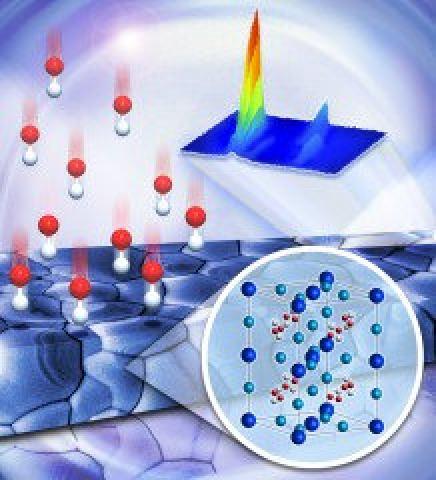Researchers at the Department of Energy's Oak Ridge National Laboratory (ORNL) have found a potential way to further improve solar cell efficiency by understanding the competition among halogen atoms during the synthesis of sunlight-absorbing crystals.

Using high-powered imaging techniques, the team tracked kinetic activity in organometallic halide perovskites. Halogen ions, competing for a position in the growing structure, affect the movement of charges through the crystals and subsequently impact the efficiency of sunlight's conversion to electricity.
The team first used X-ray diffraction for a real-time peek at the stages of crystallization, immediately monitoring the chemical reaction between a mixed-halide vapor and a thin lead-iodide film. ORNL researchers then extracted chemical, molecular and elemental data from the perovskites using time-of-flight secondary ion mass spectrometry for ex-situ analysis. The mass spectrometer's beams of ions provided a snapshot of information about molecular activity on the crystal's surface and established chlorine's eventual distribution in the grain boundaries, or crevices, of perovskite films.
A combination of imaging techniques allowed the ORNL team to track the outcome of the halogen competition in the solar material. They discovered that while bromine, chlorine and iodine ions facilitate growth in a developing organometallic perovskite structure, only iodine gets a spot in the final crystal. However, though they are left out of the final structure, the molecules do have an effect on the final outcome as they help promote overall crystal growth.
The measurements offered several insights into perovskite crystallization kinetics that will lead to improvements in the synthesis and processing of the materials for high efficiency solar cells, according to the scientists.